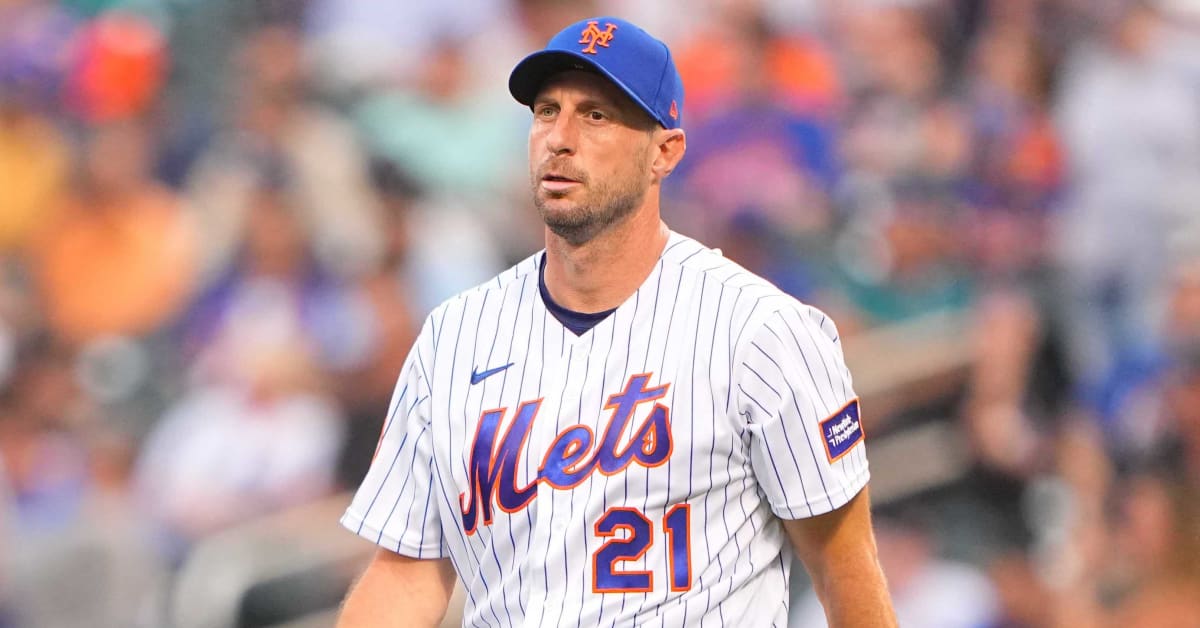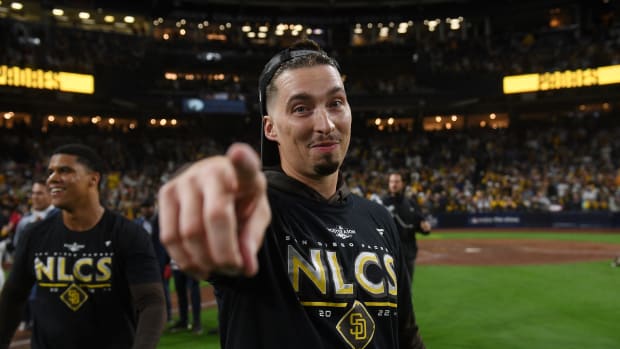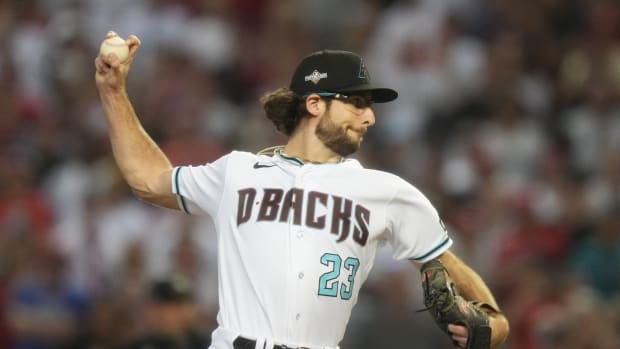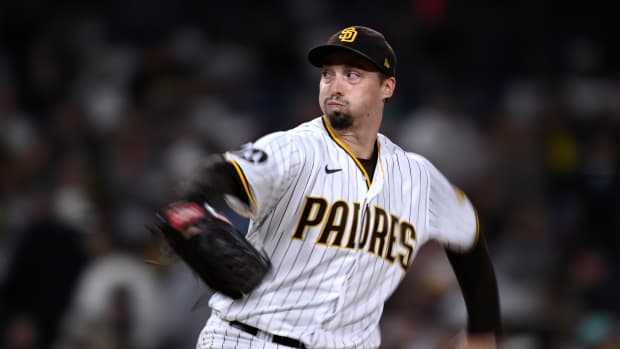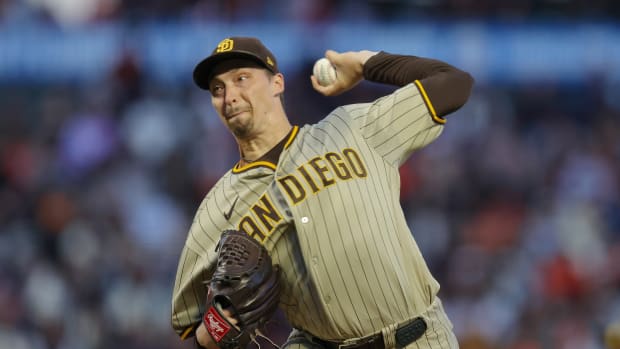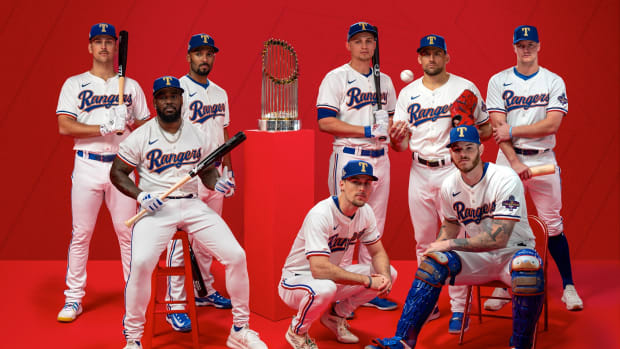Rangers Entice Mets to End Short-Lived Max Scherzer Era
When the Mets signed Max Scherzer almost 20 months ago, it felt like a new era for the franchise, ushering in a time of high payrolls and even higher expectations under owner Steve Cohen.
Now? That all feels very distant. With their season in shambles, the Mets are trading Scherzer to the Rangers for middle infield prospect Luisangel Acuña, the younger brother of Braves outfielder Ronald Acuña, Jr. The deal is more than a rental: The 39-year-old Scherzer will reportedly be exercising his player option to stay in Texas for 2024, too, according to Jeff Passan of ESPN. (The Mets will also send cash to cover some $35 million of Scherzer’s salary.) For the contending Rangers, it’s a chance to bolster their rotation down the stretch, albeit at a rather high price. And for the Mets, it’s a nice return on the official white flag for a season that, despite its promise, has been disappointing since the start.
The Rangers have spent almost the entire year in first place in the AL West. The Astros have never given them much breathing room—Houston currently sits just two games back of Texas—but they’ve managed to retain their hold on first all the same. The Rangers’ one clear need for the deadline? Some additional starting pitching. That’s partially to cover the loss of Jacob deGrom, who has not pitched since April and underwent Tommy John surgery in June. But there are some other points to address here, too. Martín Pérez has not been able to replicate his All-Star turn from last year; Andrew Heaney has struggled to match his performance from his one season with the Dodgers.
It’s not that this rotation has been bad. (Quite the opposite: Its 3.86 ERA is among the top five in MLB!) It’s just that it’s a bit thin, with limited ability to absorb any potential bad luck down the stretch and into the postseason. And when a team already has the best offense in baseball, as this one does, it tends to focus its deadline attention elsewhere.
Which presumably led them to Scherzer. The three-time Cy Young winner is about as splashy an acquisition as a team can possibly make. But this year hasn’t gone according to plan for him. The veteran has been having his worst season in more than a decade—since well before he first unlocked the level of performance that made Scherzer, well, Scherzer. His year has been shot with misery the entire way through. While he has not made a trip to the injured list, he’s battled a slew of minor ailments, and even when healthy, he hasn’t looked himself.

Opposing hitters have recorded a 38.3% hard-hit rate against Scherzer, his highest rate since Statcast began recording the statistic in 2015.
Gregory Fisher/USA TODAY Sports
Scherzer’s lost a tick of velocity. He’s struggled especially with his slider: After generating an average whiff rate of nearly 50% on the pitch from 2017 to ‘22, this year, that figure’s dropped to just 34%. His strikeout rate is the lowest it’s been in 10 years. His walk rate is up. He’s allowing more hard contact. In short, just about everything has been going wrong here. Of course, Scherzer’s historically high standards mean that a disastrous year for him is what might be an average one for just about anyone else. (Almost literally: Scherzer has a 4.01 ERA, or 103 ERA+, which puts him almost right at league average.) But no one looks to Scherzer for average performance. While he’s shown flashes of his typical self this year, those have come against a backdrop of frustrating, uncharacteristic mediocrity.
So … why go to the trouble (and give up the vaunted prospect) to acquire him now? Scherzer has built his career out of his ability to make adjustments. Perhaps the Rangers picked up on some hint of an impending turnaround: Scherzer’s performance has improved since the All-Star break. (He’s gone at least seven innings while allowing one run or fewer in two of his last three starts.) It may also help that the move to Texas means a reunion with Rangers pitching coach Mike Maddux, who was with the Nationals in 2016 and ‘17, when Scherzer won back-to-back Cy Young awards in Washington. But even if a major improvement doesn’t come, Texas doesn’t have to rely on Scherzer to be an ace. (Nathan Eovaldi has been filling that role very nicely.) This rotation has been successful this year. What the Rangers needed most here was depth for their stretch run. They’ll get at least that in Scherzer—and potentially much more.
But it comes at a cost. The 21-year-old Acuña is enjoying considerable success in Double A—he’s ranked as MLB Pipeline’s No. 44 prospect, and will immediately become New York’s No. 1 or No. 2 prospect. It’s true that the Rangers’ middle infield is set for the foreseeable future, both in the big leagues and throughout their farm system, and they might not have valued Acuña quite as highly as other organizations would. Still: He’s a big name to move. Acuña should give Mets fans quite a bit to dream about.
It’s certainly not an ideal position for the Mets. But if they had to sell off like this—which, given their position in the standings, didn’t feel like much of a choice—Acuña represents a very solid return. (And landing a prospect of this caliber was possible only with the amount of cash the Mets were willing to eat on Scherzer’s salary.) With days left until the deadline, expect them to keep trading even more, doing their best to bring in whatever young talent they can.
As for Scherzer? He now should have (at least) one more opportunity to pitch in October.






























